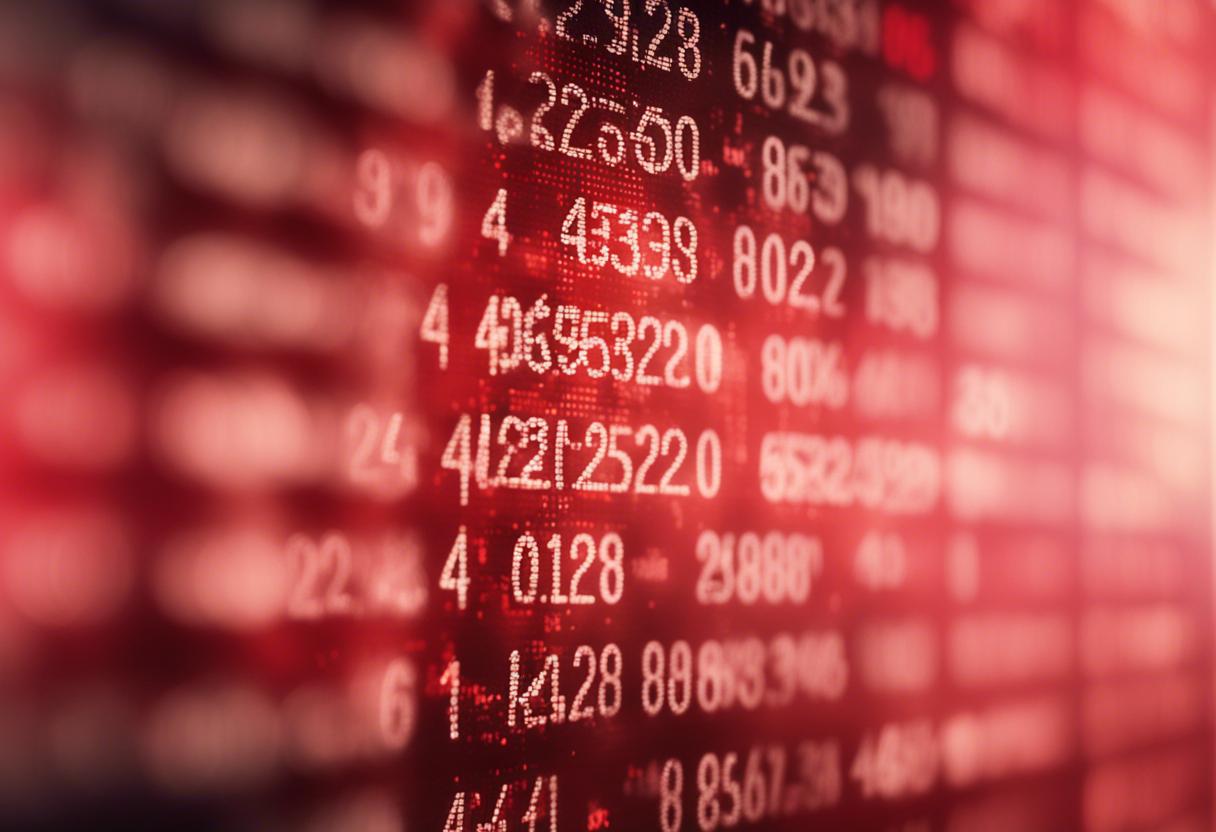Anxiety over the potential of a US recession sent worldwide stocks spiralling downwards on Monday, with Japan’s Nikkei index taking a drastic 13 per cent dive. Other Asian markets echoed this decline as Japan’s comprehensive Topix ended the day down 12.2 per cent, eradicating any progress made this year. The Nikkei 225 underwent the largest one-day points drop in its history, plunging beyond 4,450 points and exceeding the 3,836 points lost during the notorious “Black Monday” in October 1987.
In Europe, shares took a dive to near half-year lows with the benchmark Stoxx Europe 600 falling 3 per cent, marking its worst performance in over two years. All key European markets started the day on a downshift. In Dublin, early trade saw a 1.5 per cent decrease on the Euronext.
The repercussions of the day weighed heaviest on the finance sectors. Banks witnessed a 4.2 per cent loss, financial services dropped 3.6 per cent and the tech sector dipped 5 per cent.
Futures markets pointed towards this downward trend extending to the US. The Nasdaq 100 contracts were predicted to trade down by 5 per cent, while the S&P 500 was anticipated to open 2.9 per cent lower.
The surge of downturns is fuelled by increasing apprehension that the Federal Reserve’s delayed response to growing indicators of a weakening US economy may culminate in a rush of hasty interest rate cuts. Investor anxiety about the vigour of the globe’s largest economy, coupled with amplified tensions between Israel and Iran, has added extra strain to markets already reeling from an investor withdrawal from top-performing technology stocks.
“I anticipate a delay in recovery due to the current culmination of issues; the unravelling Japanese carry trade, downturn in US Big Tech, and Middle East tensions,” remarked Seema Shah, Principal Asset Management’s chief global strategist.
On Monday, futures on the Vix index, a widely recognised barometer of anticipated US stock market instability often dubbed Wall Street’s “fear index”, surged past 40 points. This peak has not been witnessed since the early phase of the Covid-19 crisis. Market participants in Tokyo interpreted this dramatic sale as a substantial adjustment and risk-reduction strategy by international funds. Yet, the city’s equity market was also adversely affected by a yen that has appreciated roughly 12% since mid-July. Monday saw the yen escalate a further 2.2% to ¥142.3 against the dollar.
“The Japanese market is regarded by international investors as an option on global commerce,” stated the Japan lead of a worldwide pension fund. “Thus, if you are actively minimising risk, as many investors are currently due to worries of a US recession and political issues, it is logical to capitalise on a Japanese market that has had considerable success this year.”
Topix and Nikkei futures both experienced trading suspensions during the afternoon as the frenzied selling persisted to the day’s end, triggering “circuit breaker” levels that automatically halt all trading. Similarly, in Korea, these circuit breakers were set in motion for the initial time in four years. Traders at three separate Tokyo brokerages reported that numerous major hedge fund clients were instructed to liquidate all their holdings due to mounting losses.
The Japanese sell-off reverberated throughout other Asian markets. South Korea’s Kospi benchmark ended the day down 9.1%, while Australia’s S&P/ASX closed 3.7% lower. The Indian Sensex slipped 2.9%.
Worldwide volatility has also infiltrated the cryptocurrency sector. Bitcoin’s price plummeted over 17% on Monday to $52,000 and ethereum, another cryptocurrency, dropped nearly 17% to $2,200.
The central bank held steady on rates at its most recent meeting, though the market response following the employment data suggests that investors think the Fed may have erred in failing to slash rates. Over the weekend, JPMorgan economists joined an expanding ensemble of Wall Street analysts recommending that the Fed lower rates by 0.5 percentage points at its upcoming two gatherings.
Investors anticipate the Fed will reduce borrowing expenses by more than one full percentage point by the conclusion of the year to counterbalance an ailing economy.
Diana Iovanel, a leading markets economist at Capital Economics in London, suggested that current equity “valuations are nowhere near indicating an economic disaster”.
She expressed, “The resurgence of anxiety regarding a possible US downturn has heightened the likelihood of further reductions in Federal rates. However, we are of the view that the US economy will soon cease to present obstacles to an equity surge.” – This information is protected by copyright under The Financial Times Limited 2024.

